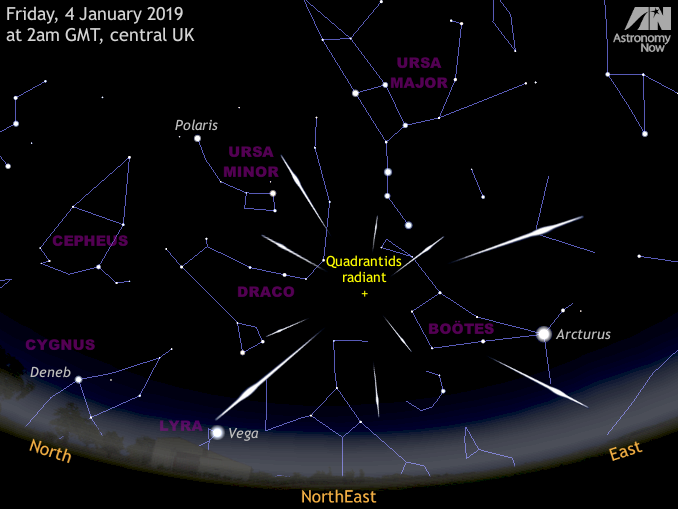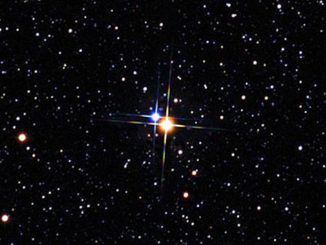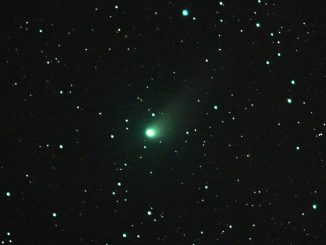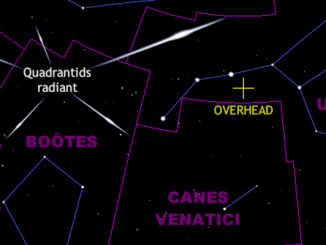
An extinct constellation
This shower of shooting stars is named after Quadrans Muralis (the mural quadrant), a now-defunct star group that used to lie in the space between our present-day constellations of Boötes and Draco. For its 28 December to 12 January duration, the Quadrantid radiant (the point in the sky from which the meteors appear to originate) sits in northern Boötes.
An extinct comet
The source of the Quadrantids is most likely a small solar system body known as (196256) 2003 EH1 that was discovered on 6 March 2003. It completes a circuit of the Sun every 5.52 years in a highly inclined, eccentric orbit and last came to perihelion on 12 March 2014. Probably an extinct comet, it is the scattered debris from 2003 EH1 that Earth intersects in early January each year.
A rich shower
The Quadrantids have the potential to put on an impressive display with up to around 80 shooting stars per hour — if you happen to be watching at just the right time. They are slow to medium speed meteors, formed from particles of 2003 EH1 entering Earth’s atmosphere with velocities of around 43 kilometres (27 miles) per second, with brighter Quadrantids often appearing yellow and blue. About ten percent of these will also leave persistent glowing trails.
When to observe
While they have the potential to rival rates of the August Perseids or the December Geminids, the Quadrantids are often overlooked since the peak activity occurs within a four-hour window centred on a short, sharp maximum. The International Meteor Organisation (IMO) predicts that the shower will peak at 2h20m UT (2:20am GMT) GMT on Friday, 4 January 2019. This certainly favours European observers.
How to observe the Quadrantids
The Quadrantid radiant is circumpolar for temperate northern latitudes such as the British Isles, hence it doesn’t set. While this means that you can see Quadrantids at any time of night in the first few days of January, recall that the period of peak intensity is brief. UK-based observers should therefore make the most of any clear skies between 12am and 4am GMT on 4 January, directing their attention towards the northeastern sky.
Faint Quadrantids are the most plentiful, so to maximise your chances you should find a safe location that is as far removed from streetlights and other sources of light pollution as you can and allow 20 minutes for your eyes to become fully dark adapted. The 27-day-old waning crescent Moon doesn’t rise until 6:30am GMT (London) on 4 January, so moonlight won’t be an issue.
Ensure that you are dressed in multiple layers of clothing with warm boots or shoes, gloves and — particularly important — a hat, since a large proportion of heat is otherwise lost through the head. A garden lounger chair and a thermos flask of your favourite hot beverage is a good idea as you’ll be still for long periods during your vigil.



